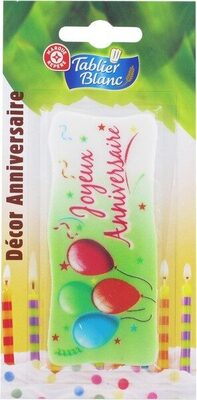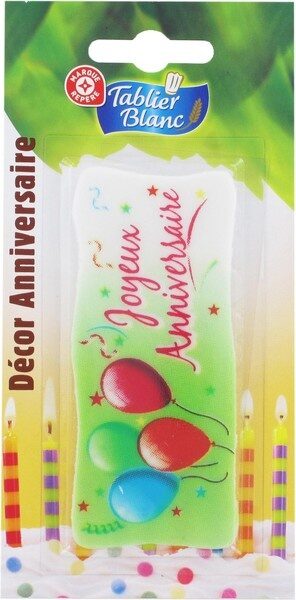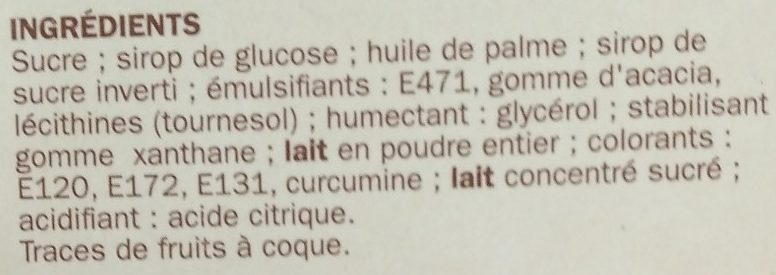Décor anniversaire - plaque 116 x 58,6 - Tablier Blanc - 7 g
This product page is not complete. You can help to complete it by editing it and adding more data from the photos we have, or by taking more photos using the app for Android or iPhone/iPad. Thank you!
×
Some of the data for this product has been provided directly by the manufacturer Scamark.
Barcode: 3564700749647 (EAN / EAN-13)
Common name: Décor comestible, sucré
Quantity: 7 g
Brands: Tablier Blanc, Marque Repère
Categories: Cooking helpers, Pastry helpers
Labels, certifications, awards:
Green Dot
Stores: Leclerc
Countries where sold: France
Matching with your preferences
Environment
Packaging
Transportation
Threatened species
Report a problem
Data sources
Product added on by kiliweb
Last edit of product page on by packbot.
Product page also edited by nino17, openfoodfacts-contributors, org-scamark, scamark, sebleouf, teolemon, youplaboum, yuka.UjUwd0VLUU5tS1lBaGRvaDd3bllvdE5RNFlTWlhFbWFNT01ESWc9PQ, yuka.WG9KUUZZUVBnTlVNbDg4WDREN1EvdGx2eVk2TVdGeVhDY1VvSVE9PQ.











